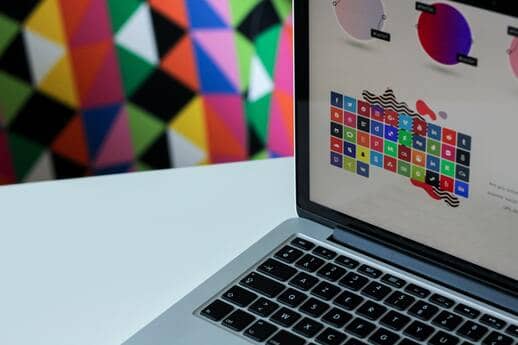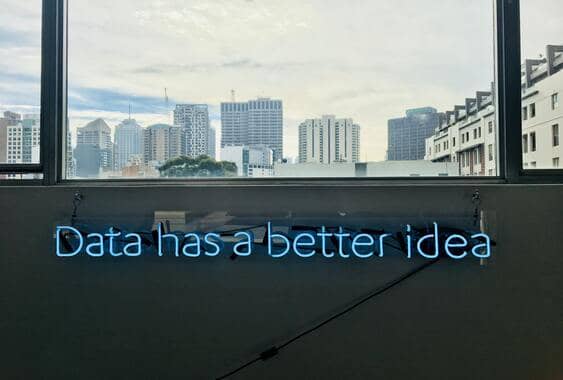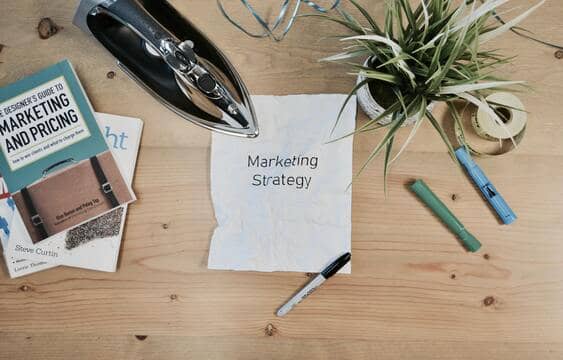If you love art and design but don’t cherish the lifestyle of the starving artist, then you may want to consider a career in graphic design. As a graphic designer, you know that people will see your work every day. They’ll register it, and they may well like it.
But even though it’s art, it exists in the strange space between anonymous tech and signature design. People will love your work without ever asking who designed it.de
In this guide, we’ll let you know how to get into this fascinating career path and the kind of opportunities you might find in graphic design.
What Does a Graphic Designer Do?
A graphic designer’s responsibilities are varied but their main purpose is to ensure that any design or layout is visually appealing, aesthetically pleasing, and functionally sound. They focus on visuals which includes print graphics, computer graphics, illustrations, logo design, advertising graphics, drawings, and more. Graphic designers might also perform any of the following:
- coming up with creative design concepts
- managing the production of graphics by providing deadlines and specifications to the printer or web developer
- creating layouts and page designs that convey information clearly and effectively
Why Become a Graphic Designer?
The core of graphic design is visual communication. Anytime you see text and images on posters, billboards, logos, or even the T-shirt you’re wearing—all of these products are possible thanks to the creativity of graphic designers.
The work of graphic design professionals is everywhere. From the stock image you scrolled past on the last news article you read to today’s Google Doodle, all this is the work of graphic designers. It’s a career that gives you an excellent opportunity for expression and an unlimited number of platforms to exhibit your work.
Beyond the freedom to create, what else can you expect from this field? Keep reading to find out:
High Demand for Graphic Designers
Every company needs graphic design. The simple reason? Logos. While this is usually a one-off job, if you think of the world’s leading companies, someone had to create the Nike Swoosh and the golden arches of McDonald’s. The story of the Nike logo is a cautionary tale for graphic design professionals in itself: the designer only received a $35 payment.
However, the world is full of brands looking for the designer to make theirs the next logo to sear itself into the public’s consciousness. Brands will pay thousands for logo design, and there are an awful lot of companies out there needing logos.
Companies also need graphic designers for items such as:
- Designing the layout of magazines and brochures
- Designing adverts in print and web media — for example, web thumbnails are always in high demand
- Design of reports and official documents

Top Design Career for Creative People
Graphic design professionals tend to be very creative individuals. But compared to professionals in many creative industries, graphic designers can make good money doing what they love — the BLS estimates the median earnings of a graphic designer to be around $53,000 per annum.
As creative types often prefer freelance roles to the 9-5 grind, many people find graphic design a suitable career for this reason. If you can build a solid professional network, opportunities will always present themselves without having to tie yourself to a single workplace for years and years.
Diversity of Jobs
The nature of freelancing means that you’ll pick up a fascinating array of work from different clients. However, even if you work in-house for a design agency, you’ll find that you have opportunities to express yourself on a wide variety of projects.
With a graphic design degree, you can work in fields including:
- Web design
- Creative directing
- Photo editing
- Architecture
- Engineering
- Video/film editing
- Animation
- Multimedia artist
- Product design
You may find that a particular type of work (such as brochure design) suits your talents and style best or that you develop a style that attracts clients from specific industries. Whatever path you pursue, this field lets you pursue your artistic passion while making a lucrative career out of it.
Education Pathways To Become a Graphic Designer
Formal education in graphic design, such as degree programs, offers aspiring designers a strong foundation in design principles, technical skills, and industry insights. These programs often provide students with access to valuable resources, networking opportunities, and potential job placements. Additionally, certifications and continuing education courses allow designers to stay current with industry trends and sharpen their skills.
However, traditional degree programs may not be the right fit for everyone. Alternative educational pathways, such as online courses and self-paced learning, provide a more flexible and accessible approach to acquiring graphic design skills. Workshops, seminars, and conferences offer immersive learning experiences and networking opportunities. Apprenticeships and internships allow aspiring designers to gain practical, hands-on experience while working alongside industry professionals. Exploring these various educational options will enable you to find the pathway that best aligns with your learning style and career goals.
Undergraduate Degree
Many designers have an undergraduate degree in graphic design. Aside from showing that you’ve spent years working on your art, it shows that you have a good foundation in the best practices for graphic design. While your portfolio will always be your greatest asset, especially in your early days, a degree can encourage prospective employers to take you seriously. You may also find that a degree in art or a related subject such as industrial design can help you become a graphic designer.
Master’s Degree
Getting a Master’s degree in graphic design depends on your career goals. If you prefer working as a freelancer, it’s rarely necessary to get a higher qualification like a Master’s degree. However, if you’d like to eventually work as a company’s art director or head a design agency, a Master’s degree can help open doors for you.
Master’s degrees in fields like web design or branding may also help you progress in your career as a graphic designer.
Certificate Programs in Graphic Design
There are many certificate programs available online in graphic design. These will provide you with a solid framework to continue your development as a designer.
The advantage of certificate programs is that they tend to be far shorter and less expensive than degrees but can equip you with the knowledge to inform your style and make you more attractive to employers.
Graphic Design Courses
You could say that self-study comes naturally to artistic types. We’re not ourselves if we’re not creating, scrapping, and improving projects constantly. All of these activities could count as self-study.
There are also online courses available to help you focus your self-study and specialize your work, creating a style that will get you recognized.

Skills Required to Become a Graphic Designer
You’ll pick up many skills in your studies related to graphic design. However, you should also develop skills that will help you find clients and succeed as a designer. These include:
- Communication: Did you know that graphic design also counts as communication design? Communication has to be at the center of everything you do in this career path. You need to communicate a message to your audience, and to understand what that message is, you need to be able to communicate effectively with others working on a project. Learning how to interpret client instructions while expressing yourself, and asking questions to meet your brief better, are essential skills.
- Networking: Building a network of past clients and contacts who can hook you up with new jobs is essential, especially as a freelancer. Your reputation will grow based on your ability to network effectively, so it’s worth investing in this skill. If you take an undergraduate degree, this is an excellent opportunity to begin networking.
- Creativity: Your success will always hinge on the quality of your product. Being able to translate ideas into gorgeous images should be second nature by the end of your studies. You’ll always be learning and improving. Your portfolio should show consistency — and consistent improvement.
Graphic Designer Career Growth
Career growth in graphic design will vary depending on your goals and satisfaction in your role. Here are some examples of career progression in graphic design:
Entry-Level Positions
At the start of your career, you’ll typically get assignments to work on smaller projects. If you work for an agency or company, it will help you build your skills and supervise your progress, giving you small-scale client jobs. Some entry-level titles may include:
- Junior Graphic Designer
- Packaging Designer
- Presentation Designer
- Website Developer
- Print Designer
Associate to Mid-Senior Level Positions
After a few years, you may progress to an editorial position. You’ll be in charge of editing and approving the work of designers working under you, as well as helping clients determine the kind of design they desire.
- User Experience Designer
- Marketing Designer
- Graphic Designer
- Digital Product Designer
- Motion Graphic Designer
Senior-Level Positions
At the senior level, you’ll spend more time liaising with clients and helping oversee your design company’s creative vision. You may also spend time mentoring your junior colleagues and helping them develop their careers.
- Creative Director
- Art Director
- Lead Visual Designer
- VP of Brand Management
- Director of Graphic Design

What Companies Hire Graphic Designers
Below are some top companies hiring graphic designers and what you can expect to be doing:
- Disney: No company knows the power of visuals like Disney. Whether it’s creating advertisements for its films or designing brochures for its incredible theme parks (don’t fancy Florida or California? Try Paris), there are many graphic design jobs at this company. Plus, working on visual art at Disney puts you in amazing company and makes a great line on a date.
- Nike: We mentioned the iconic Nike logo earlier — we can promise you won’t be redesigning that as a graphic designer at Nike. Sports brands value design highly, and none more than Nike. In this role, you’ll be working with other creatives to showcase the company’s top products.
- Apple: If, like so many, you’re a fan of the stripped-back, corner-free design style of Apple, you might consider graphic design careers at Apple. The company is famous for constantly innovating and improving its design, and this goes for every part of its operation.
Interview Questions – Examples
- What are your strengths as a graphic designer?
- How would you define successful design?
- What’s your experience with design software?
- Tell me about the last design project you designed for.
- How does creativity help you in your work as a graphic designer?
- Tell me about the most creative and successful project you’re proud of.
- Who is your favorite designer and why?
For more tips to help you ace your interview, check out our graphic designer interview question guide.
Additional Tips
Develop a Strong Portfolio
A professional portfolio is essential for showcasing a graphic designer’s skills and expertise to potential clients and employers. It serves as a visual representation of your abilities and allows you to demonstrate your creativity, versatility, and growth as a designer.
When creating a compelling portfolio, consider including a variety of work samples that exhibit your adaptability and artistic range. Showcasing both personal and professional projects highlights your passion for design and your ability to meet client expectations. Lastly, keeping your portfolio updated and organized will ensure that your most recent and relevant work is easily accessible, making a lasting impression on potential clients and employers.
Network and Gain Industry Experience
Networking plays a crucial role in building a successful career in graphic design. Connecting with industry professionals through social media, events, and online forums can lead to valuable opportunities and insights. Seeking mentorship and guidance from experienced graphic designers can also help you navigate the industry and refine your skills.
Industry experience, such as internships, freelance work, and side projects, is essential for honing your craft and expanding your professional network. Embrace a strong work ethic and a willingness to learn from every experience, as this will not only improve your skills but also demonstrate your dedication to potential clients and employers. By actively engaging in the graphic design community and gaining hands-on experience, you will be well-equipped to excel in your career.
Stay Updated with Industry Trends and Technological Advancements
Keeping current with industry trends in graphic design is essential for maintaining a competitive edge and staying relevant in the field. Regularly reading blogs, articles, and publications related to graphic design, as well as attending industry events, conferences, and workshops, will enable you to stay informed about the latest developments and best practices.
Embracing technological advancements and new design tools is equally important for a successful career in graphic design. Continually updating your skills and knowledge of design software and tools will help you adapt to the ever-evolving industry landscape. Additionally, exploring new techniques and approaches to graphic design will enable you to innovate and distinguish yourself from other designers, ultimately elevating your work and career prospects.
Conclusion
You might fall in love with the flexibility of freelance life. You might find a dream job at a top company where your designs are on display in front of millions or even billions. Or you might rise to a top position, such as art director of a creative agency, or even start your own.
Whatever style of work you enjoy, there’s so much variety in graphic design careers that we know you’ll find the perfect role for your talents.



